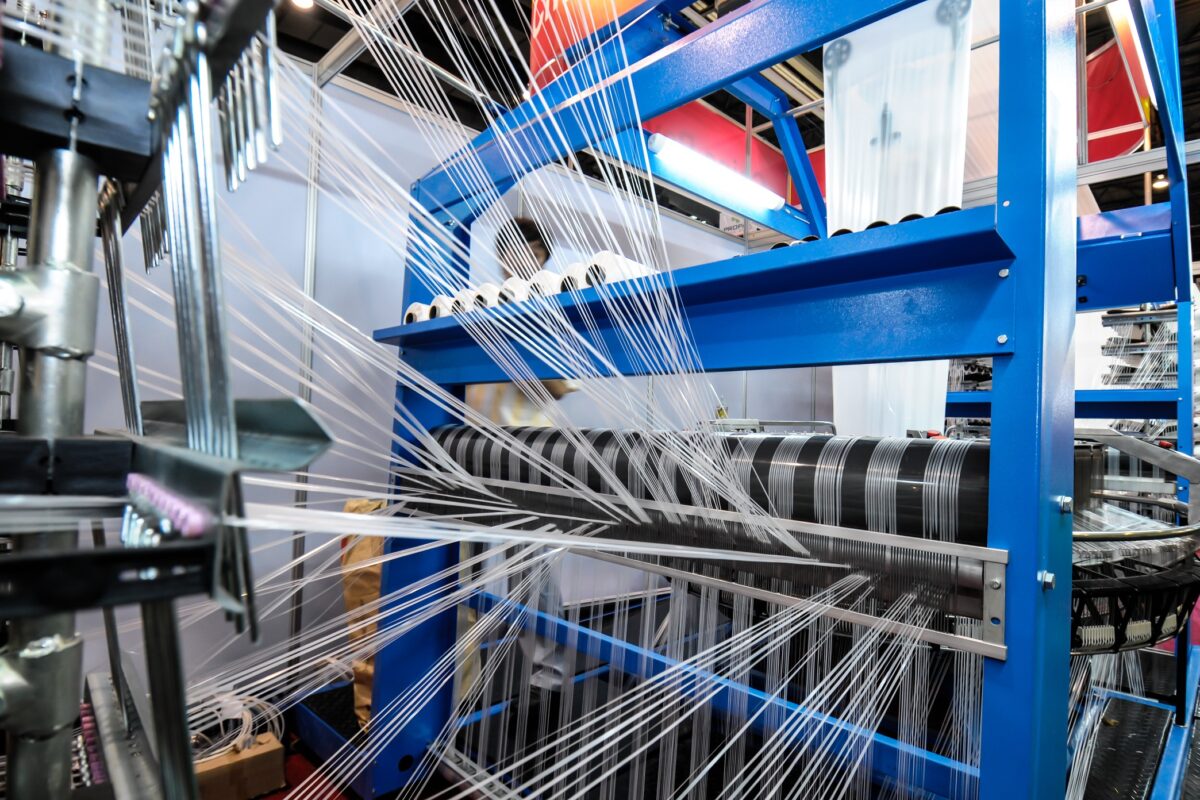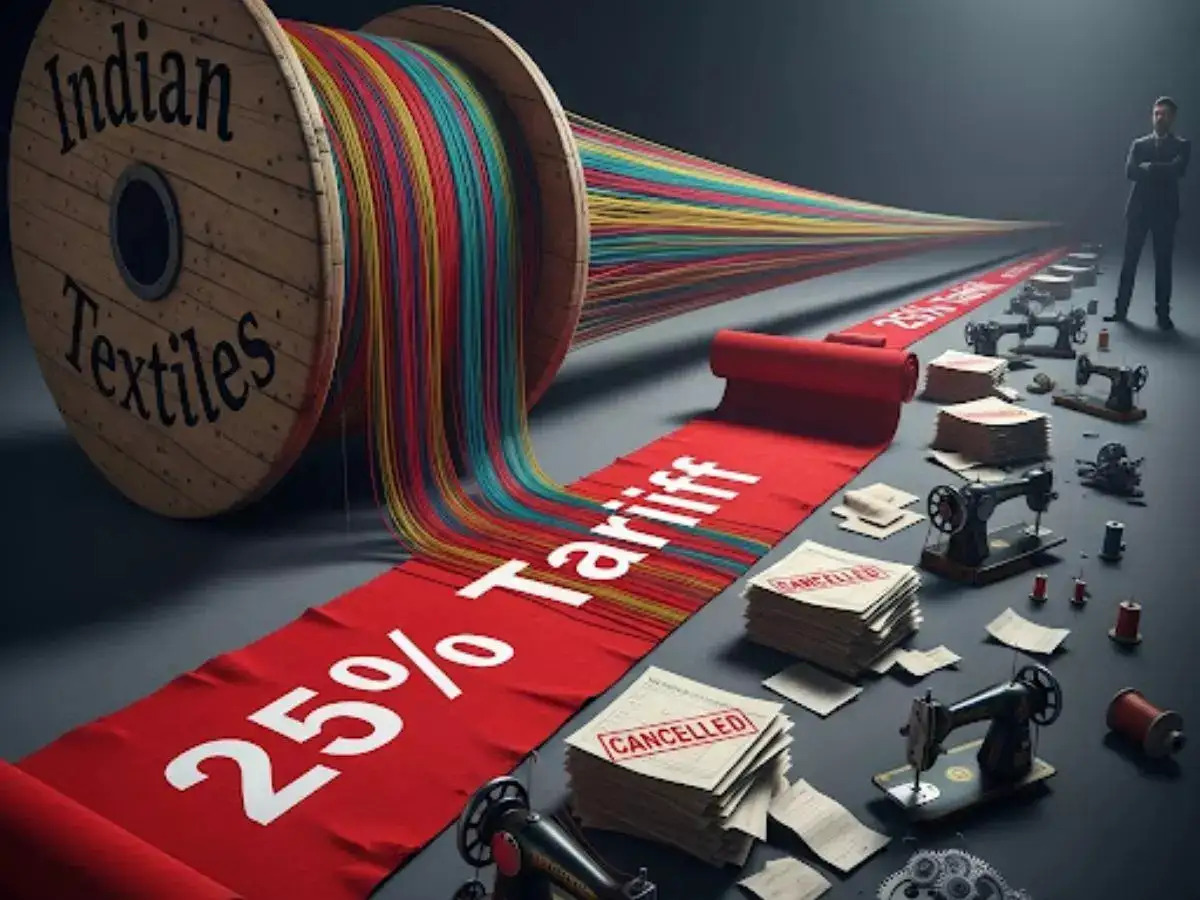FW
There are some possible consequences of GST on various raw materials, fabrics and garments. The 18 per cent service tax on job working activities such as knitting, cutting, weaving and packaging could hurt small textile units badly. Integrated textile units, which do the job working internally will not be impacted.
GST of 18 per cent on manmade fibers will have considerable negative impact on manmade fiber manufacturing companies.
Subsuming of countervailing duty in GST for garments and fabrics will result in intense competition from companies in Bangladesh and Sri Lanka.
GST will be capped at 12 per cent on garments priced above Rs 1000 and at five per cent on garments below Rs 1000.
Companies that sell garments below Rs 1000 will see cost savings of two or three per cent while those selling garments above Rs 1000 may report a two or three per cent increase in costs.
Though there is no excise tax on readymade garments, the industry was still paying VAT of 5.5 to six per cent and 7 to 7.5 per cent for garments above Rs 1000. The difference in tax rate will get offset, more or less, by embedded tax credit.
The industry’s value chain, which is extremely fragmented at present, will benefit from a uniform tax rate across all verticals.
The government has revised and announced a major relief by sharply allowing to cut down GST rate at 5 per cent from 18 per cent announced earlier, for the work provided by job workers in textile and apparel industry, enabling job workers full input credit.
The high level of 18 per cent tax on job working and merchant services would have offered inverted duty structure resulting into a negative impact on the business, since many inputs were kept under various tax slabs. The textiles and apparel industries in India are largely dependent upon the work with over two-thirds of the volume manufactured as job working activity.
"The move of the GST Council will help many job workers generate self-employment. Since captive plants attracted 5 per cent, it was only job work which was kept under 18 per cent slab. So, job workers needed to be aligned with captive manufacturers. Hence, the GST rate cut on job workers is a big relief for the entire textiles industry," said Siddharth Rajgopal, Executive Director, The Cotton Textiles Export Promotion Council (Texprocil).
"These are very good steps by the government, good for the highly decentralised sector. From processing of fabrics to embroidery, GST rate on making charges have been fixed at 5 per cent," said Srinarain Aggarwal, chairman, Synthetic and Rayon Textiles Exports Promotion Council( SRTEPC).
Thanking government for the announcement of reduction of GST rate for job workers to 5% per cent, Rahul Mehta, president, CMAI, says "We had represented to the government raising possible issues and the negative impact of high duty on job working. This would help job workers survive and compete with those with captive manufacturing facilities," said.
"When President Trump pulled out of the Paris Climate agreement last week and sent the world careening toward a global environmental calamity, a historic collection of parties in the United States came together in response."

When President Trump pulled out of the Paris Climate agreement last week and sent the world careening toward a global environmental calamity, a historic collection of parties in the United States came together in response.
Officially named We Are Still In, the pledge has been signed by 1,370 businesses and investors (along with nine states, 275 colleges and universities, and 178 cities and counties), and the list is still growing. Of the 1,370 businesses involved in We Are Still In, 35 of those are apparel brands like Under Armour, Nike, Adidas, Gap, Levi’s.We Are Still In wants to show the US is committed to fighting climate change. 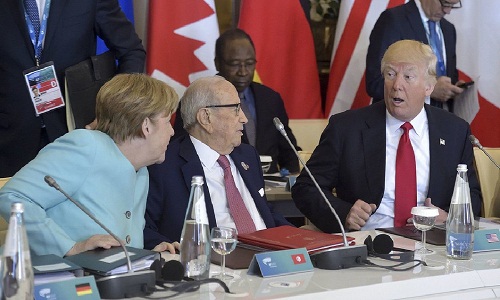
Timberland was moved to sign the We Are Still In initiative to join forces with like-minded companies that believe business plays an important role in climate action. Patagonia calls Trump’s decision to leave the Paris agreement cynical and short-sighted. Nike is deeply disappointed by the withdrawal.
We Are Still In will unite the public and private sectors on an even larger scale moving forward. Signatory Nike has signaled its ready to link up with its home state of Oregon, one of nine states also signed on to the pledge. Not only can the two work together to reduce total emissions coming out of Oregon, but Nike—which wants to use only renewable energy by 2025—can share its cutting-edge methods with public and private organizations.
Billionaire Mike Bloomberg has pledged to fulfill the 15 million dollar contribution the US would have made annually to the United Nations had it stayed in the agreement. We Are Still In also makes companies a part of a coalition promising to fulfill the abandoned promises of the United States.
What ‘s happening here is a giant global trust fall and while Trump may have walked away, over a thousand different entities are opening their arms.
Nike, as well as the companies under the VF Corporation umbrella (including Vans), have pledged to use 100 per cent renewable energy by 2025. By 2020, H&M wants to use cotton only from sustainable sources while Gap hopes to do the same by 2021. Warby Parker is working on eco-conscious changes as granular as the weight of its try-at-home boxes, hoping to reduce their mass in order to put less strain on the vehicles that transport them.
How all these admirable actions will be coordinated between We Are Still In signatories is yet to be seen, but even in its initial form the pledge is still a massively important gesture. In the face of challenge, this group is coming together to overcome and meet the expectations of millions of people in the US and billions of people around the world.
"The global polyester staple fiber market features a high degree of fragmentation between suppliers and has a presence of a number of buyers seeking competent suppliers, finds Transparency Market Research (TMR). Several players are focusing on parameters such as the quality of finished products, aftersales support, and credit terms for buyers in order to gain a competitive edge over others. The degree of competition is anticipated to remain moderate throughout the forecast period (2016–2024)"
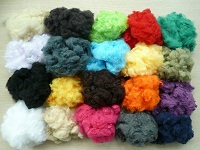
The global polyester staple fiber market features a high degree of fragmentation between suppliers and has a presence of a number of buyers seeking competent suppliers, finds Transparency Market Research (TMR). Several players are focusing on parameters such as the quality of finished products, aftersales support, and credit terms for buyers in order to gain a competitive edge over others. The degree of competition is anticipated to remain moderate throughout the forecast period (2016–2024)
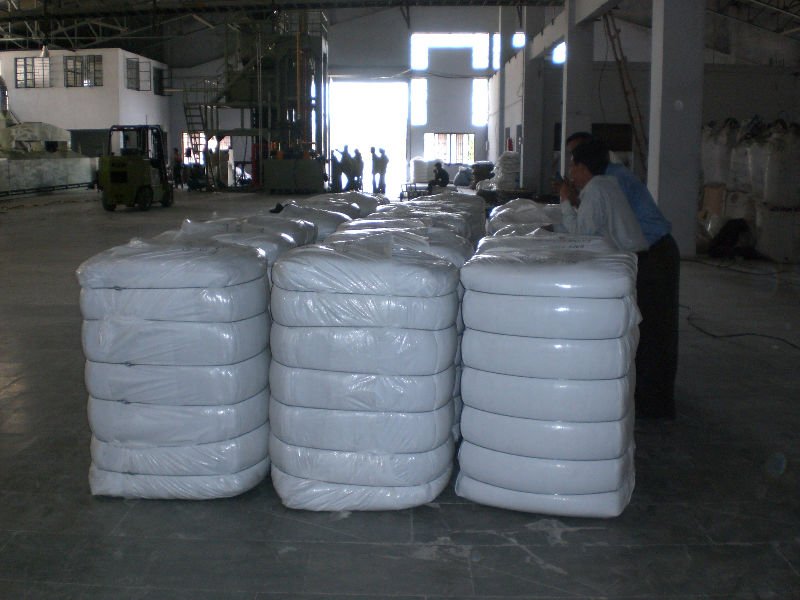
The global polyester staple fiber market was valued at US$23,404.0 mn in 2015. Rising at a CAGR of 7.5 per cent during 2016–2024, and can reach US$42,415.1 mn by the end of the forecast period. At present, Asia Pacific is the leading regional market for polyester staple fibers and held a major share in 2015. China and India, which are major producers, and are expected to maintain their lead throughout the forecast period.
Among all the apparel industry is emerging as the most promising application segment. The growing popularity of man-made fibers in the textile industry is a key factor propelling the demand for polyester staple fibers market. The declining consumption of cotton in the textile industry world over coupled with the growing prominence of polyester staple fibers in making fabrics is a seminal factor driving the market. In addition, the growing application of polyester staple fiber in areas such as automotive, apparel, and as fiber fillings in different types of furniture has boosted the market. The wide application of polyester staple fiber in making spun yarn in the garments and textile industry continue to catalyze the market growth. A burgeoning automobile industry and accelerated automobile sales have led to an extensive use of polyester staple fibers in cars, as they are cost-effective and have high durability.
Further, the growing use of recyclable polyester staple fibers as a blend in the wadding industry has boosted the market. In addition, the use of polyester staple fibers in making needle punched non-woven fabrics are expected to accentuate the market. The strict imposition of anti-dumping duties on import of purified terephthalic acid (PTA) from major producing countries is likely to impede the market to an extent. Additionally, the prices have reduced due to the wide regulations related to cotton prices in developing countries, which has led to hamper the demand for polyester stable fibers.
Textile workers in Haiti took the streets of the capital a second time in two weeks, demanding wage increases. Workers at sweatshop, trousers and other garment factories also protested the dismissal of some 40 trade unionists in an Industrial park in Port-au-Prince. They have now entered their third week on strike, promising to continue fighting for better working conditions. Their core demands include a minimum wage increase from roughly US$5.50 to US$12.60 per day, protections against quota increases and access to social services for all workers. They also noted that production quotas are set high, that factory owners and management mistreat workers, and that workers' salaries often amount to less than the current minimum wage. Dozens of textile factories in Port Au Prince has been closed because of this strike.
The strike, has spread to the country's four main cities: Port Au Prince, Carrefour, Ounaminthe and Caracol. These malfeasances, union organizers, cognizant that their co-workers receive the lowest wage in the Western Hemisphere, are frequently pestered by management and arbitrarily fired simply for demanding their legal rights. Working hours of the workers are between 12-16 hours per day, which has led the garment workers, to live in debt, hungry and on the brink of homelessness in working.
The Association of Haitian Industries claimed that “militants and syndicatists” were responsible for beating workers, forcing them to join the picket lines in favor of improved work conditions.
Jeans and a white T-shirt are the blank canvas for Gap’s new film Bridging the Gap. Gap describes the film as a celebration of American optimism. The diverse cast, which includes model Christie Brinkley, actress Priyanka Chopra, musician Wiz Khalifa and more, sings Sunny by Boney M., which conveys a message of optimism, while each dances to their own rhythm.
The film is directed and styled by Edward Enninful, who will take over as editor-in-chief for British Vogue in August. Edward Enninful is the perfect partner in this project as he and Gap share an optimistic view of the world.
Gap is a quintessentially American brand. ‘Bridging the Gap is about showing the many faces of what it means to be an American and bringing all of those sides together. The brand has mastered the art of bringing together big names for film campaigns. In February, Gap marked the release of the ‘90s archive re-issue collection with a film starring Naomi Campbell and a roll call of emerging talent, including model Lizzy Jagger and artist Coco Gordon.
Gap’s comparable sales for the first quarter of fiscal year 2017 were up two per cent versus a five per cent decrease last year.
Bangladesh’s merchandise exports to the United Kingdom dropped by 5.60 per cent during the eleven months of the current fiscal year. The country’s exports to the UK stood at 3.25 billion dollars in the July to May period of this fiscal. The amount was 3.44 billion dollars in the same period of financial year ’16.
Such export decline could be attributed to Brexit or Britain’s exit from the European Union. After Brexit, Bangladesh has to pay 400 million dollars as additional import duty, which is around eleven per cent of its annual export to the UK, and it will also require renegotiating a bilateral trade policy. Total annual exports to the UK were 3.81 billion dollars in the past fiscal year.
The UK is the third single largest destination for Bangladesh’s exports where all products enjoy duty-free market access following the EU’s everything but arms regime. Bangladesh historically maintains a positive trade balance with the UK. The UK is one of the largest development partners of Bangladesh. It also has substantial business interests in Bangladesh and remains the second biggest foreign investor.
Brexit is expected to bring trade and investment opportunities for Bangladesh. Bangladesh would be among the most affected developing countries of the Commonwealth in terms of tariff.
As per the reports the UK textiles sector needs a more imaginative industrial policy to help it build the capabilities needed for a sustainable future. The project that produced the report was funded by the British Cotton Growers’ Association Work People’s Collection Fund.
The findings of the research ‘Coming Back? Capability and Precarity in UK Textiles and Apparel’ are directly relevant to the current UK Government consultation on industrial strategy and to debates about restoring manufacturing as the Textile and Apparel sector remains important but is now dominated by small and micro-firms with, on average, low investment, productivity and wages. While it is possible to make high quality products in the UK, many producers struggle with low returns. The report argued that the industry policy needs to have a more explicit focus on the textile sectors by addressing some of the specific challenges.
The report points out thatat present, more than 80 per cent of clothing and textile products is manufactured abroad. The UK T&A sector has been considered largely a part of the UK’s industrial past, not its future and the sector has been in long-term decline since the 1970s.
The report further explained about the Ecological conditions and on how the business environment acts as an ecology that offers both opportunities and challenges to producers. Therefore shape the way in which firms develop the productive, marketing and finance capabilities that they needed to be sustainable.
In contrast, many small clothing manufacturers have little power in their relationships with major retailers, resulting in low and uncertain profit margins. These conditions make it more difficult to achieve prices necessary to pay UK wages, manage risk, secure a modest return for business owners and invest for the future.
In the apparel sub-sectors researchers making sure management succession and securing patient capital that can withstand the cyclicality of the industry are relevant to sustaining capabilities. The report does not only focus on number of jobs but explore the sustainability for industrial policy in textiles and apparel manufacturers.
In the first four months of 2017, Vietnam’s exports to Russia grew by 78.2 per cent. The two-way trade value in 2016 was up 25 per cent over 2015. In the first four months of 2017, it climbed 30 per cent year on year.
Garment and textile exports from Vietnam to Russia were up 146.47 per cent year on year followed by coffee. However coffee exports to Russia fell 18.14 per cent on year.
In addition, Vietnam’s exports of electronic devices were up 16.6 per cent and exports of footwear to Russia were up 10.82 per cent. Vietnamese companies are investing in Russia. To date, Vietnam has about 20 investment projects with a total registered capital of nearly three billion dollars in Russia.
Vietnam-Russia economic cooperation has been strengthened in the areas of trade, investment, oil and gas, and electricity. The two-way trade has been on the rise and forms of cooperation and investment have also been increasingly diversified.
More opportunities for bilateral cooperation are expected especially when the two countries adopt bilateral payment in domestic currencies.
Brands are in a race to evolve their supply chains and manufacturing technologies in order to get new products to the market faster.Brands like Nike and Adidas have made moves to increase speed to market. They have shed the old model in which new shoe styles could take up to 18 months to crawl from conception to store shelves.
These efforts have led to a huge cut in supply chain lead times, reducing the chance of having excessive, slow-moving inventory and increasing sportswear makers' odds of keeping up with the latest trends. That could add an additional 15 per cent to top line growth.
So almost 20 per cent of Nike’s and Adidas' production may be automated by fiscal 2023. Innovations like digitized design, automated production, 3D printing could also increase their share gains.
After the supply chain changes take hold, almost no small brand or private label footwear maker for the foreseeable future will be able to offer comparable quality products to what Nike and Adidas have at similar prices.
So major athletic wear brands are poised to offer better products.
Sales in the athletic wear industry may have a seven per cent annual global growth by 2021.

